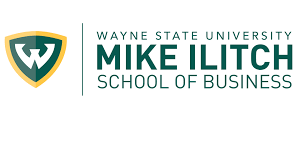 In recent years, the agile methodology has become increasingly popular in the software development world. Large organizations are finding that adopting an agile approach can help them respond more quickly to changes in the marketplace and deliver higher-quality products. However, there is still some debate about whether an agile methodology or a more traditional MVP (minimum viable product) approach is best for large organizations. In this blog post, we'll take a look at both options and explore how they can be used to achieve success in large organizations. Which one will you choose for your next project?
In recent years, the agile methodology has become increasingly popular in the software development world. Large organizations are finding that adopting an agile approach can help them respond more quickly to changes in the marketplace and deliver higher-quality products. However, there is still some debate about whether an agile methodology or a more traditional MVP (minimum viable product) approach is best for large organizations. In this blog post, we'll take a look at both options and explore how they can be used to achieve success in large organizations. Which one will you choose for your next project?
Define What is Meant by "Agile" and "MVP"
Agile and MVP are two popular strategies used by organizations seeking to innovate and drive successful products or services. MVP (Minimum Viable Product) is a method of rapidly testing market acceptance in order to reduce the risk of a new project for large organizations. MVP helps teams to focus energy on creating only what’s necessary to satisfy early customers and their feedback, improving results over time as they learn more about its value proposition. Agile, on the other hand, refers to an iterative process that involves multiple feedback loops and frequent releases of different versions or versions with added features. It enables companies to quickly make changes when customer feedback is received during product testing while staying better connected with customer needs. Thus, MVP approach can be thought of as a subset of the Agile approach specific to larger organizations.
In the Context of Large-scale Organizations
Agile methodology and minimum viable product (MVP) are two important concepts that a large-scale organization needs to be familiar with. Agile is an iterative process used to develop software products. It emphasizes quick delivery, continual feedback, and immediate changes instead of following a predetermined design process. MVPs help organizations quickly develop early prototypes and assess market demand before investing a full-scale effort into the project. The goal is to validate the concept before making major investments in resources, time, and money. Together, Agile methodology and MVPs provide an efficient way for organizations to understand their customer's needs, build better products faster and make informed decisions regarding the direction their products should take.
Benefits of Choosing an Agile or MVP Approach for Large Organizations
Large organizations face unique challenges when it comes to product development. Time and resources are limited, making the decision of which approach to take critical for success. Fortunately, there are several agile and MVP options that can make a positive difference in the process. Agile methods such as Scrum and Kanban provide organizations with an iterative framework, allowing teams to quickly develop software while adjusting the requirements if needed. Meanwhile, Minimum Viable Product (MVP) approaches encourage teams to focus on the most important aspects at any given stage to deliver successful products within small budgets and deadlines. By taking advantage of these alternatives, large organizations can better manage their projects, save time and money through efficient methods, and produce remarkable results.
How to Implement Agile or MVP Methods in Large Scale Organizations
Implementing an agile or MVP strategy for larger organizations can be a big undertaking. To make sure the strategy is successful, it is important to have a set plan in place outlining the steps needed to put the strategy into use. The first step should be developing a detailed definition of what goals you hope to achieve with this strategy; this will guide all other decisions made throughout implementation. Afterward, you'll need to identify key stakeholders who will be involved in making sure the transition runs successfully and plan out how resources such as human capital, funds, and time will be allocated for the project. Additionally, it is important to set expectations upfront about how much flexibility there will be when it comes to meeting objectives during agile reviews and milestones. Finally, after all preparations are complete and everyone is on board, your new strategy can go live. When done correctly, utilizing an agile/MVP strategy can not only improve project outcomes but also result in better communication between team members and provide overall greater control over intended results.
With agile or MVP methods, it is important to start small and work incrementally. Instead of trying to tackle the entire problem in one go, start by tackling the most pressing issue first and then enhance as needed. Another helpful troubleshooting tip is to pay attention to feedback cycles - both internal and external. As an agile team, you should aim to respond quickly to any feedback and use it as soon as possible. Lastly, ensure that everyone on the team has a clear understanding of the MVP mission at hand. Collaborative discussions can aid in communication and help identify potential problems before they arise. All in all, start small, enhance when necessary and stay agile!
All in all, there are numerous benefits to implementing an agile or MVP approach for large organizations, in terms of increasing customer satisfaction and driving innovation. In order to successfully execute such a strategy, it is essential to carefully plan out both the short-term and long-term goals associated with the project. Furthermore, comprehensive communication plans should be put into place in order for the team members to stay connected throughout the process. To solidify any doubts or fears related to this kind of project, we recommend looking at case studies from large organizations that have already used agile or MVP strategies with positive results. Last but not least, issues may arise along the way that require troubleshooting, however if you equip your team with relevant enough tools and create a responsive environment for feedback you can mitigate this risk altogether. As you can see, embracing an agile and MVP strategy brings many advantages whether you work in a large organization or not – the key is understanding what steps to take in order to ensure success!
How to Setup an Agile Team, Including Roles and Responsibilities
When beginning to build an agile team, the first step is to allocate roles and responsibilities. An effective team should include both a Scrum Master and Product Owner who are able to maintain a culture of collaboration, communication, continuous improvement and trust. The Product Owner should have in-depth product knowledge to ensure that the team has the resources they need while working on the project. The Scrum Master should be responsible for implementing scrum methods like sprint planning or retrospectives. They should also be organized, proactive, and able to lead the team through building solutions for solving any leading problems. Other roles can include developers with expertise in coding or designing as well as quality control experts or UX designers with specialized skillsets for analyzing user feedback. Coordinating this mix of talent will help create an agile team capable of operating quickly on their goals with tangible results.
Importance of Product Backlog and Prioritize Features in MVP
Large scale organizations benefit from creating a product backlog to prioritize their features. This involves gathering user feedback into feature ideas and outlining an MVP (Minimum Viable Product). Then the process begins to break down which feature is more important, considering user needs and market research. Through this process, those creating the backlog can identify the most feasible and cost-effective solutions for their product. Once prioritized according to potential return on investment, workload and timeline, large scale organizations can then move forward with creating the best possible product.
Guidance for Successful Metrics Implementation with Agile and MVP
Identifying measurable success with agile and MVP metrics can become complex. Depending on the product, project goals, and target market, the techniques to measure success need to be tailored to each situation. When possible, automating the gathering of analytics can provide insight into how a product is used and how it is performing in the market more easily. Startups need to groom their data reports to look past superficial information such as downloads or acquisition costs alone and focus on long-term key performance indicators such as user engagement, customer lifetime value, customer acquisition cost and monthly recurring revenue. Developing reliable methods for measuring success will provide feedback on what needs improvement in order for product goals to be achieved.
So, to wrap things up for setting up an agile team for large-scale organizations, we have come to the realization that a good product must be intentional, given the hectic pace of a business. Agile methodology helps teams prioritize customers’ needs over process. It is indeed essential for long-term sustainability and scaling businesses by ensuring delivery on time internally and externally. Furthermore, it is important to understand what MVP means and why having an initial version of the product becomes vital in developing products that match customer demands. The product backlog keeps track of functional requirements and defines clear deliverables that can engage customers while refining the development practices. The perpetual cycle of sprint planning and retrospectives ensures continuous optimization while continuous delivery and DevOps facilitate higher frequency code deployments which reduce risks associated with major releases. Lastly, agile metrics provide granular insights into progress which serves as effective feedback that catalyzes decision making necessary for more efficient outcomes in less time. With these fundamentals in place combined with excellent collaboration between technical professionals, success will surely follow!
Measuring Metrics
Agile workflow is all about making sure that any development or process can be measured and monitored to ensure progress towards a desired outcome. Measuring metrics is an important step in an Agile environment since it allows teams to review their performance and make changes as needed. The best way to measure your metrics is to keep track of key results regarding functionality, such as the total number of tasks shipped and the number of errors. Agile metrics are the most useful way to evaluate your Minimum Viable Product (MVP) because they focus on data points which give you insight into user engagement, performance, and growth. By quantifying successes with Agile techniques, you will have meaningful data that encourages your team's effectiveness and reiterates your objectives as goals are reached.
Case Studies of Large Organizations That Have Used Agile or MVP Effectively
ROI:
Large organizations have increasingly recognized the value of agile and MVP approaches to innovate, develop quickly and generate business impact. One example is Walmart which has used an agile-based approach to software development over the past decade. This enabled them to dramatically boost their e-commerce operations while maintaining existing online and physical sales channels, allowing the company to become a major player in digital retailing. Additionally, with their MVP strategy, they tested ideas in small markets initially before larger rollout ensuring that new products or services were thoroughly vetted before reaching all stores nationwide. This enabled Walmart to increase the speed, quality and cost efficiency of their product launches delivering maximum ROI across their omnichannel operations.
Successful digital transition:
As the digital world continues to evolve, so do the ways in which businesses operate. In order to stay ahead of the curve, companies must continually adapt and innovate. This is especially true when it comes to large organizations, who often have complex processes and systems in place. For these organizations, making the switch to agile or MVP (minimum viable product) can be a daunting task. But with careful planning and execution, it can be done successfully.
Saving Time and Money:
In recent years, Agile and MVP have become increasingly popular tools for large organizations to save both time and money. By adjusting project plans while in progress, companies can better gauge market needs and respond faster to customer demands. This iterative model allows organizations to create new products with minimal risk, resources and cost; all while still actively engaging with customers for feedback on the product strategy. Although taking on a more agile process may be initially difficult for larger organizations, adopting this approach can significantly save time and money in the long-term - all without sacrificing quality or customer satisfaction.
Agile and MVP have been incredibly effective in large scale organizations in recent years as they provide a method of rapidly testing hypotheses without making substantial investments or committing resources to them. Agile emphasizes incremental development and demands regular communication, allowing teams to quickly identify and address issues that emerge in the product lifecycle. MVP encourages organizations to launch an early minimum viable product and test it with customers, gaining feedback that can quickly be incorporated into the improvements for the next versions of the product. Both strategies have been instrumental in helping large companies innovate quickly and stay ahead of competition.


 Venkat Alapati
Venkat Alapati